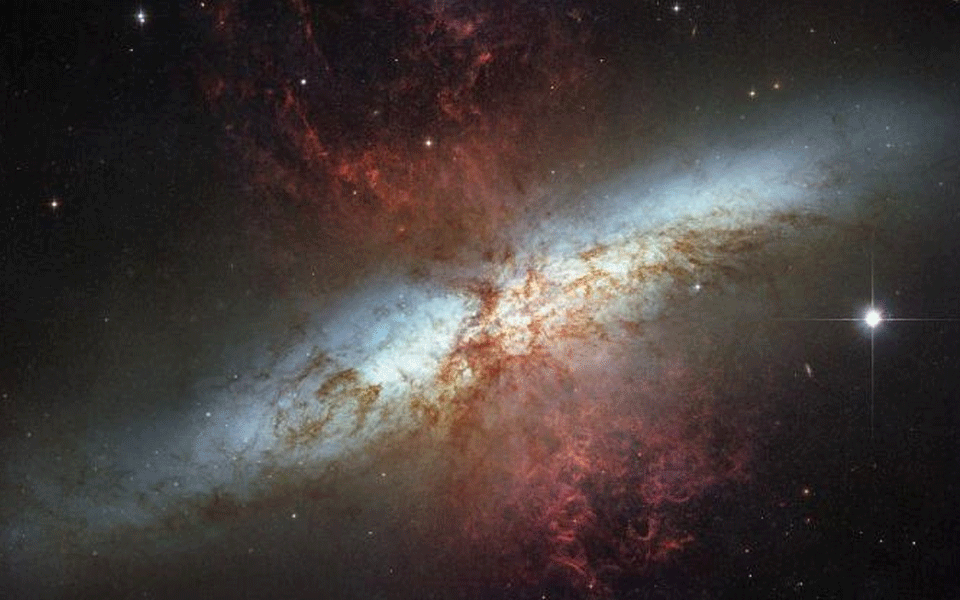Pune: AstroSat, India's first multi- wavelength satellite, has detected an extreme ultraviolet (UV) light from a galaxy which is 9.3 billion light-years away from Earth, the Inter-University Centre for Astronomy and Astrophysics (IUCAA) said on Monday.
A release from the Pune-based Inter-University Centre for Astronomy and Astrophysics said a global team led by IUCAA scientists have achieved the major breakthrough.
"India's first multi-wavelength satellite, which has five unique X-ray and ultraviolet telescopes working in tandem, AstroSat, has detected extreme-UV light from a galaxy, called AUDFs01, 9.3 billion light-years away from Earth," said it said.
The discovery was made by an international team of astronomers led by Dr Kanak Saha, associate professor of astronomy at the IUCAA, and published on August 24 by 'Nature Astronomy', the release said.
This team comprised scientists from India, France, Switzerland, the USA, Japan and The Netherlands.
Saha and his team observed the galaxy, which is located in the Hubble Extreme Deep field, through AstroSat. These observations lasted for more than 28 hours in October 2016, the release stated.
But it took nearly two years since then to carefully analyse the data to ascertain that the emission is indeed from the galaxy. Since UV radiation is absorbed by Earths atmosphere, it has to be observed from space, it said.
Earlier, NASAs Hubble Space Telescope (HST), a significantly larger than UVIT (UV imaging telescope), did not detect any UV emission (with energy greater than 13.6 eV) from this galaxy because it is too faint, it said.
AstroSat/UVIT was able to achieve this unique feat because the background noise in the UVIT detector is much less than the ones on HST," said the release quoting Saha.
Saha said they knew it would be an uphill task to convince the international community that UVIT has recorded extreme-UV emission from this galaxy when more powerful HST has not.
Dr Somak Raychaudhury, Director of IUCAA, said, "This is a very important clue to how the dark ages of the universe ended and there was light in the universe.
"We need to know when this started, but it has been very hard to find the earliest sources of light. I am very proud that my colleagues have made such an important discovery."
Let the Truth be known. If you read VB and like VB, please be a VB Supporter and Help us deliver the Truth to one and all.
Kolkata (PTI): Seven people were arrested from the Parnashree area in the southern part of the city for allegedly running a fake call centre, a police officer said on Saturday.
Acting on a tip-off, police raided a house on Netaji Subhas Road on Friday night and found the fake call centre operating from the ground floor, he said.
Preliminary investigation revealed that the accused had set up a bogus company using forged documents and posed as employees of an antivirus firm to call citizens in the US, the officer said.
"The callers would gain the trust of victims and then use remote access to take control of their phones or other digital devices. The accused allegedly siphoned off large sums of money, running into millions of dollars, from victims' accounts," he said.
Five laptops, two WiFi routers, six mobile phones and four headsets were seized from the accused, he said, adding that the seven are being questioned to ascertain the full extent of the racket and to identify others involved.





